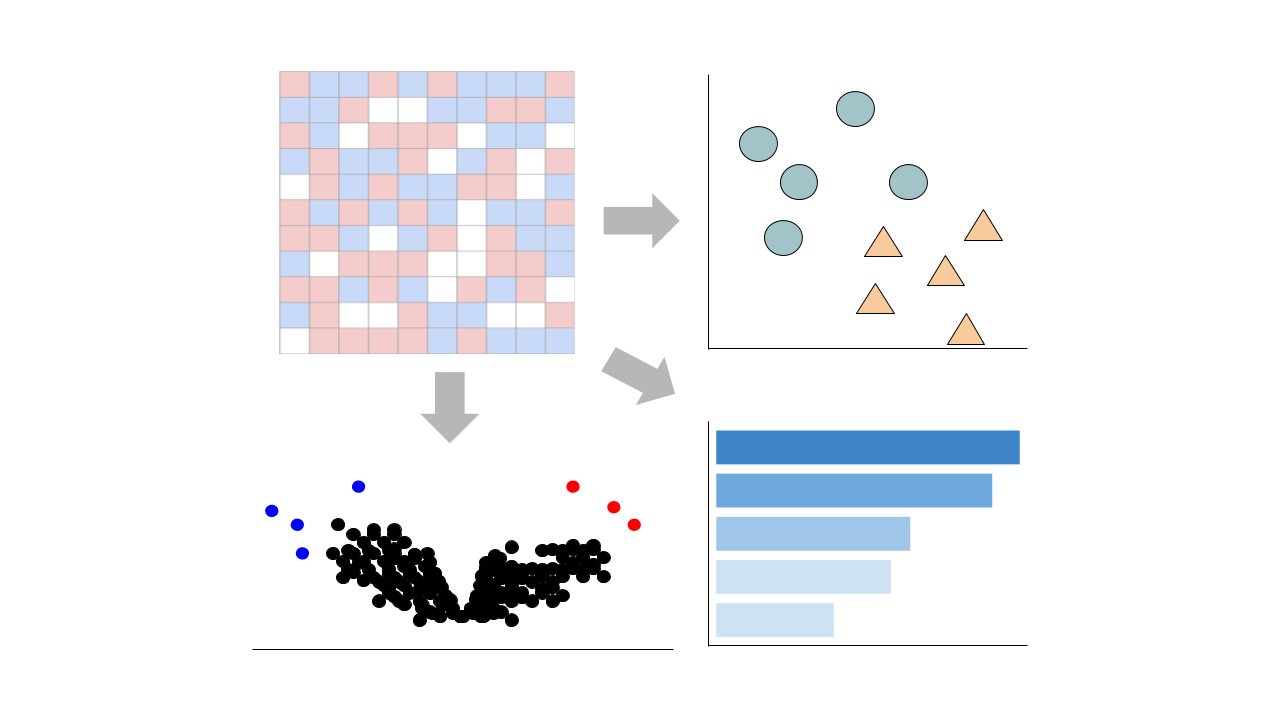 Gene counts are sourced from ARCHS4, which provides uniform alignment of GEO samples.
You can learn more about ARCHS4 and its pipeline here.
Gene counts are sourced from ARCHS4, which provides uniform alignment of GEO samples.
You can learn more about ARCHS4 and its pipeline here.
Select conditions below to toggle them from the plot:
| GROUP | CONDITION | SAMPLES |
|---|---|---|
| Human islets of Langerhans |
GSM2897819 GSM2897823 GSM2897827
|
|
|
GSM2897822 GSM2897826
|
Submission Date: Dec 21, 2017
Summary: Human CD8+ T cells are the final mediators of autoimmune β-cell destruction in type 1 diabetes. However, their target epitopes have not been demonstrated to be naturally processed and presented by β cells. We therefore performed an epitope discovery study combining HLA Class I peptidomics and transcriptomics strategies. Inflammatory cytokines increased β-cell peptide presentation in vitro, paralleling upregulation of HLA Class I expression. Peptide sources included known β-cell antigens and several insulin granule proteins. Preproinsulin yielded multiple previously described HLA-A2-restricted epitopes. Secretogranin V (SCG5/7B2), proconvertase-2, urocortin-3 and the insulin gene enhancer protein ISL-1 were identified as novel β-cell antigens, which were processed into HLA-A2-restricted epitopes recognized by circulating naïve CD8+ T cells in type 1 diabetic and healthy donors. HLA-A2-bound neo-epitopes were also represented and originated from an alternative mRNA splice isoform (SCG5-009) and from an islet amyloid polypeptide transpeptidation product. This first description of the β-cell HLA peptidome opens new avenues to understand the antigen processing pathways employed by β cells and provides a valuable tool for developing T-cell biomarkers and tolerogenic vaccination strategies.
GEO Accession ID: GSE108413
PMID: 30078552
Submission Date: Dec 21, 2017
Summary: Human CD8+ T cells are the final mediators of autoimmune β-cell destruction in type 1 diabetes. However, their target epitopes have not been demonstrated to be naturally processed and presented by β cells. We therefore performed an epitope discovery study combining HLA Class I peptidomics and transcriptomics strategies. Inflammatory cytokines increased β-cell peptide presentation in vitro, paralleling upregulation of HLA Class I expression. Peptide sources included known β-cell antigens and several insulin granule proteins. Preproinsulin yielded multiple previously described HLA-A2-restricted epitopes. Secretogranin V (SCG5/7B2), proconvertase-2, urocortin-3 and the insulin gene enhancer protein ISL-1 were identified as novel β-cell antigens, which were processed into HLA-A2-restricted epitopes recognized by circulating naïve CD8+ T cells in type 1 diabetic and healthy donors. HLA-A2-bound neo-epitopes were also represented and originated from an alternative mRNA splice isoform (SCG5-009) and from an islet amyloid polypeptide transpeptidation product. This first description of the β-cell HLA peptidome opens new avenues to understand the antigen processing pathways employed by β cells and provides a valuable tool for developing T-cell biomarkers and tolerogenic vaccination strategies.
GEO Accession ID: GSE108413
PMID: 30078552
Visualize Samples
 Visualizations are precomputed using the Python package scanpy on the top 5000 most variable genes.
Visualizations are precomputed using the Python package scanpy on the top 5000 most variable genes.
Precomputed Differential Gene Expression
 Differential expression signatures are automatically computed using the limma R package.
More options for differential expression are available to compute below.
Differential expression signatures are automatically computed using the limma R package.
More options for differential expression are available to compute below.
Signatures:
Select conditions:
Control Condition
Perturbation Condition
Only conditions with at least 1 replicate are available to select
 Differential expression signatures can be computed using DESeq2 or characteristic direction.
Differential expression signatures can be computed using DESeq2 or characteristic direction.
This pipeline enables you to analyze and visualize your bulk RNA sequencing datasets with an array of downstream analysis and visualization tools. The pipeline includes: PCA analysis, Clustergrammer interactive heatmap, library size analysis, differential gene expression analysis, enrichment analysis, and L1000 small molecule search.

 Chatbot
Chatbot Single Gene Queries
Single Gene Queries
 Gene Set Queries
Gene Set Queries
 Bulk Studies
Bulk Studies
 Single Cell Studies
Single Cell Studies
 Hypotheses
Hypotheses
 Resources
Resources
 Contribute
Contribute
 Downloads
Downloads About
About
 Help
Help